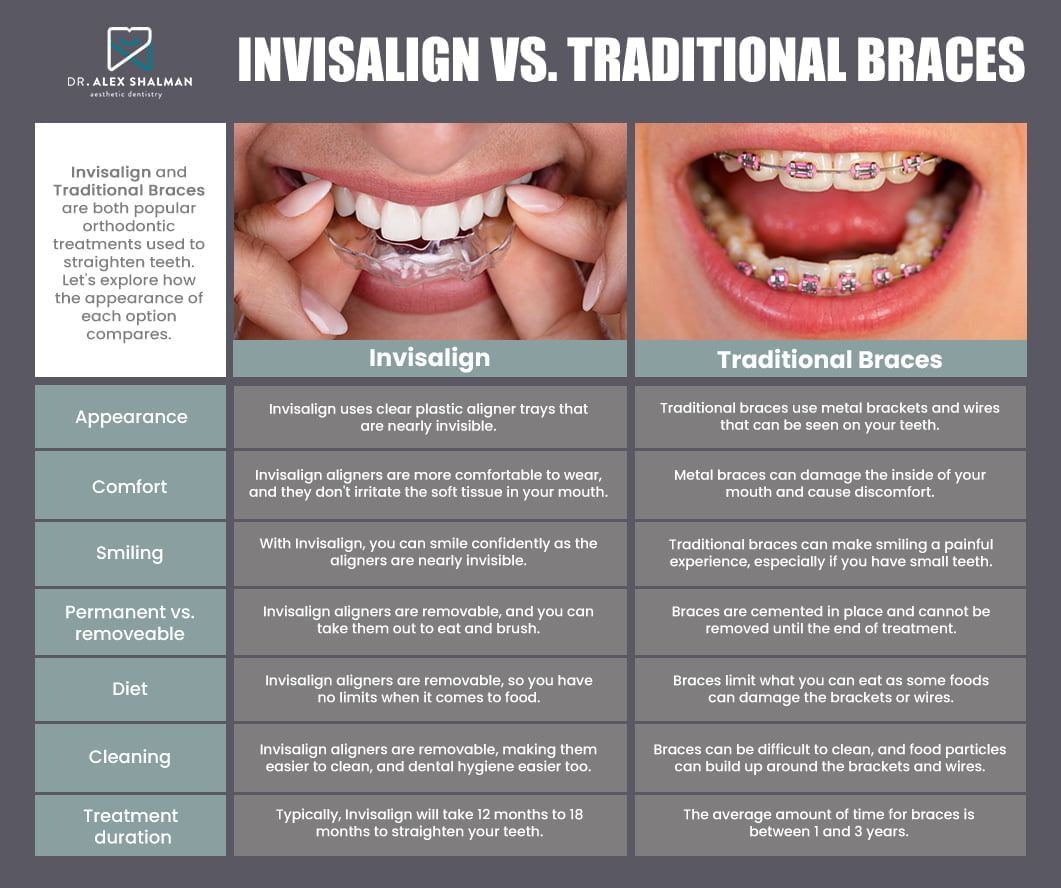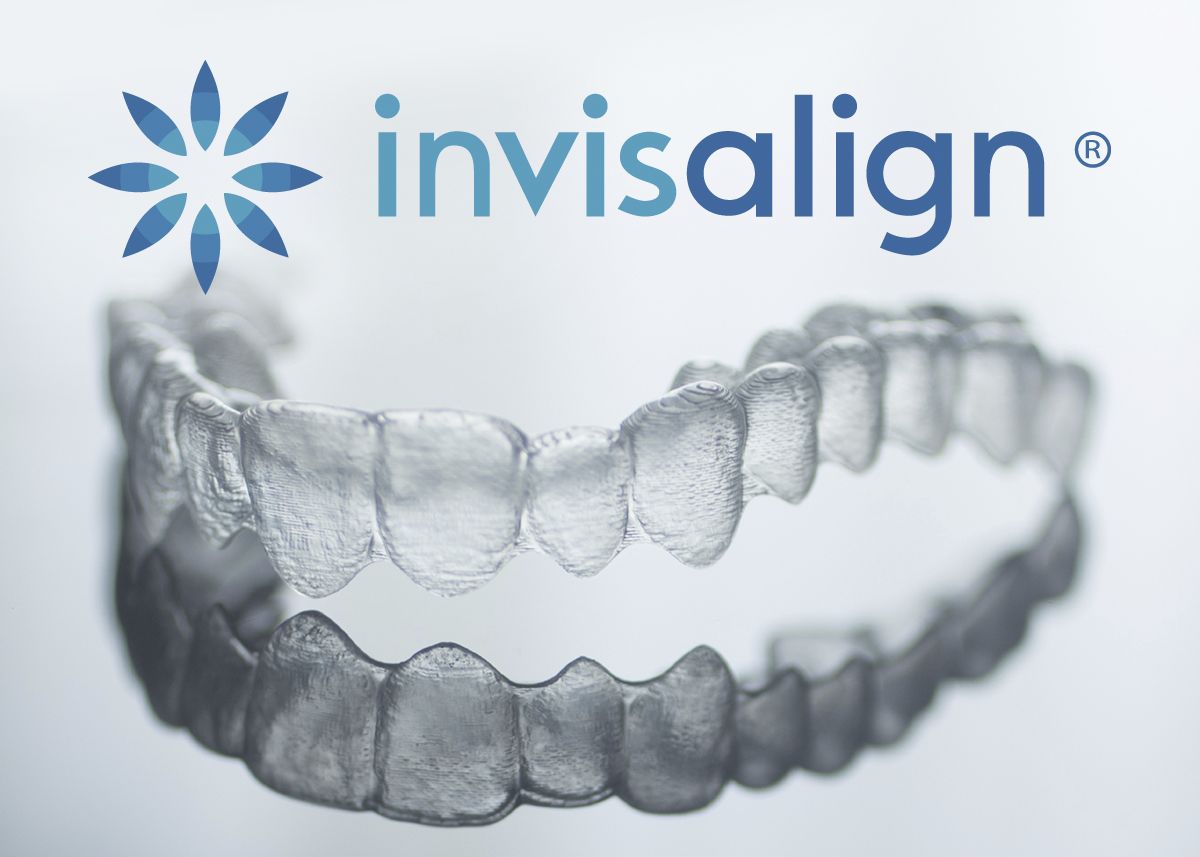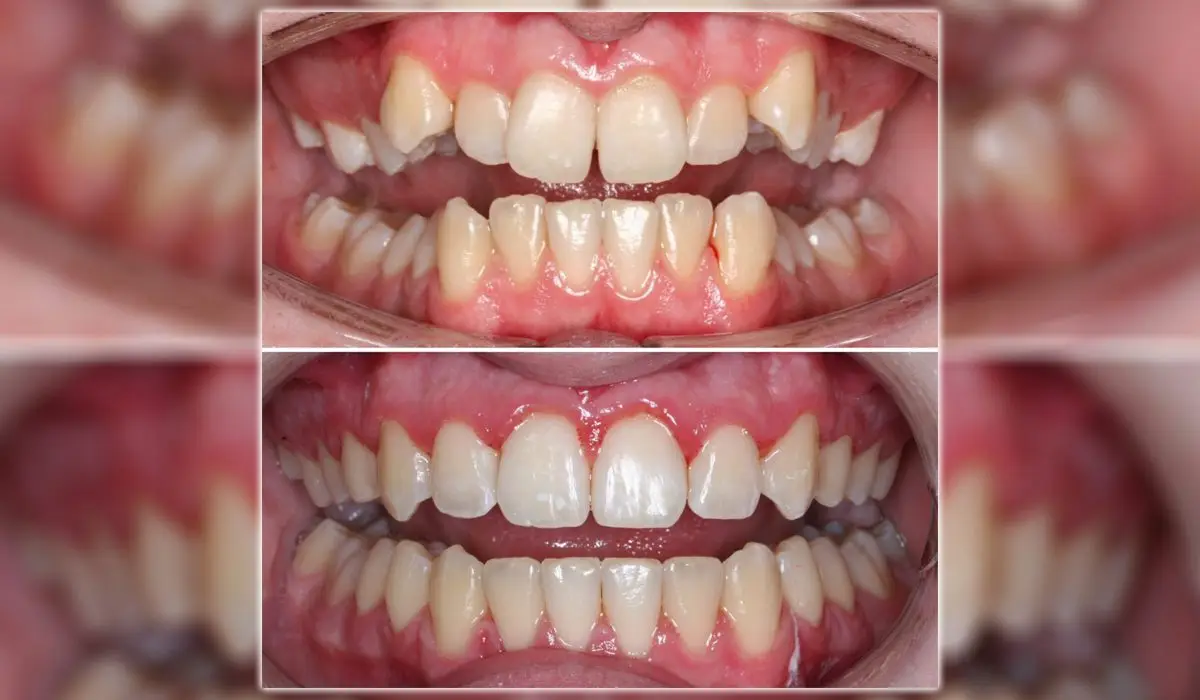Invisalign vs. Standard Braces: Which Option Is Right for You?
When taking into consideration orthodontic treatment, the option between Invisalign and standard braces presents several essential factors that merit careful examination. Invisalign uses a very discreet option with removable aligners, while typical dental braces supply a more visible yet reliable remedy for serious misalignment.
Review of Treatment Options

On the other hand, standard dental braces include metal braces and wires that are bonded to the teeth. This technique applies constant stress with time to achieve placement. While effective for intricate orthodontic concerns, conventional dental braces require normal visits for changes and can present challenges in maintaining dental health because of the problem of cleaning around cords and braces.
Both choices have their advantages, and the choice commonly hinges on specific oral problems, way of life choices, and client compliance. Inevitably, getting in touch with an orthodontic professional is essential for identifying the most appropriate therapy plan tailored to individual needs. Recognizing the nuances of each alternative can substantially affect the general success of orthodontic therapy.
Aesthetic Factors To Consider
A significant factor affecting the choice in between Invisalign and typical dental braces is the visual charm each therapy offers. Invisalign aligners are crafted from clear plastic, making them virtually unnoticeable when put on. This discreet look is specifically attracting adults and teenagers that may really feel uneasy concerning their orthodontic treatment. The capacity to maintain a natural smile throughout the placement procedure can significantly enhance the patient's confidence in specialist and social setups.
On the other hand, conventional braces contain steel braces and wires, which can be a lot more noticeable. While advancements in orthodontic technology have led to the development of smaller sized brackets and colored elastics, traditional dental braces still maintain an even more conspicuous profile. For some people, the visibility of braces might prevent them from seeking required treatment.
Eventually, the choice between Invisalign and traditional dental braces may depend upon individual preferences relating to visual appeals. People that prioritize discernment often favor Invisalign, while those who are less concerned regarding visibility may go with conventional braces. Understanding the visual effects of each choice is vital for making a notified choice that straightens with one's way of living and preferences.
Convenience and Convenience

In terms of convenience, Invisalign aligners are removable, making it possible for patients to appreciate their preferred foods without limitation and preserve ideal dental health. Cleaning and flossing are streamlined, as the aligners can be taken out throughout these routines, whereas traditional braces call for cautious navigating around braces and cords.
In contrast, standard dental braces require normal adjustments, making them less convenient for those with busy timetables. Generally, the comfort and ease of Invisalign make it an attractive choice for many individuals seeking orthodontic therapy.
Treatment Period and Efficiency
While both Invisalign and typical dental braces work in remedying oral misalignments, the period of treatment can differ substantially between both choices. Typically, Invisalign therapy can take anywhere from 12 to 18 months, depending upon the complexity of the instance. The clear aligners function by slowly moving teeth into their wanted placements, and routine follow-ups with an orthodontist help make certain development remains on track.
In contrast, typical dental braces frequently need a longer dedication, normally varying from 18 months to three years. This results from their fixed nature and using braces and wires, which can be much more efficient for extreme misalignments and complicated cases (Invisalign). The therapy efficiency of traditional braces is well-documented, as they enable accurate adjustments and better control over tooth activity
Inevitably, the selection between Invisalign and typical braces might rest on both the anticipated therapy period and the specific oral issues handy. Consulting with an orthodontist is crucial, as they can give tailored suggestions based upon individual requirements, ensuring the chosen approach aligns with wanted results and timeframes.
Expense Contrast and Insurance Policy Choices
Cost plays a substantial function in the decision-making procedure for people thinking about orthodontic treatment, whether going with Invisalign or traditional braces. Usually, the expense of Invisalign ranges from $3,000 to $8,000, while standard dental braces usually set you back between $2,000 and $6,000. Elements affecting these expenses include the intricacy of the instance, the duration of therapy, and geographical place.
Insurance policy protection can substantially influence out-of-pocket expenditures. Many oral insurance plans Read More Here supply partial protection for orthodontic treatments, but the specifics can vary commonly. It is vital for individuals to evaluate their insurance coverage to figure out the extent of coverage for either option. Usually, standard dental braces may be much more frequently covered by insurance coverage plans compared to Invisalign, which some insurance providers classify as a cosmetic treatment.
Additionally, several orthodontic practices provide flexible repayment plans, making both treatment choices extra available. Patients should make inquiries about possible funding choices and discounts for in advance repayments. Assessing the complete expense, including insurance benefits and payment plans, is essential for making an educated choice that straightens with both aesthetic preferences and spending plan factors to consider.

Final Thought
In summary, the option between Invisalign and typical dental braces hinges on several elements, including aesthetic preferences, convenience, treatment period, and expense. Invisalign supplies a very discreet, detachable option that promotes dental health and dietary versatility, while standard braces might be extra suitable for complex dental problems and often come with a reduced rate point. Eventually, consultation with an orthodontist is crucial to assess private click now scenarios and determine the most ideal therapy option for attaining optimal oral alignment.
When taking into consideration orthodontic treatment, the choice in between Invisalign and typical braces presents a number of vital factors that merit cautious evaluation.Contrasting Invisalign and conventional braces exposes distinct treatment choices for orthodontic correction.While both Invisalign and standard braces are reliable in dealing with dental misalignments, the period of treatment can vary considerably in between the two choices.Expense plays a significant duty his comment is here in the decision-making process for individuals considering orthodontic treatment, whether choosing for Invisalign or standard braces.In summary, the option in between Invisalign and standard dental braces pivots on multiple variables, including aesthetic choices, comfort, therapy period, and price.